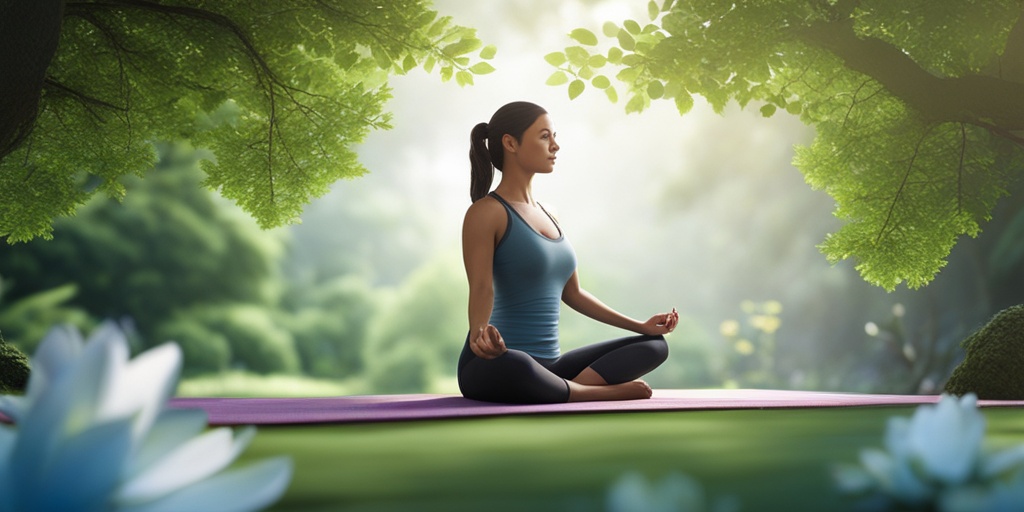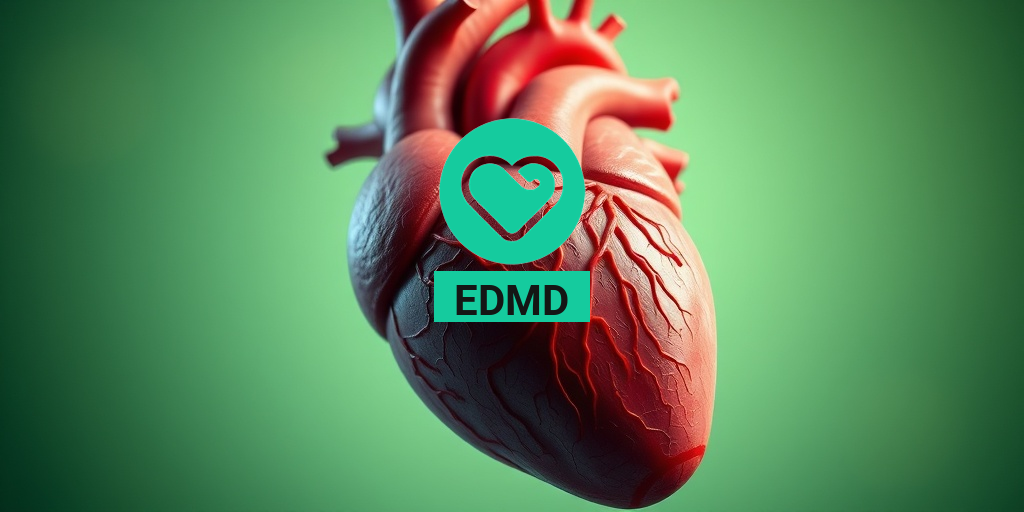What is Balance in Health?
When we think of balance, we often associate it with physical activities like gymnastics or tightrope walking. However, balance plays a much more significant role in our overall health and wellbeing. In the context of health, balance refers to the state of equilibrium where our physical, emotional, and mental aspects are in harmony.
The Three Dimensions of Balance
There are three primary dimensions of balance in health:
- Physical Balance: This refers to our body’s ability to maintain its center of gravity and posture. It involves the coordination of our muscles, bones, and nervous system to perform daily activities with ease and precision.
- Emotional Balance: Emotional balance is the ability to manage our emotions, thoughts, and behaviors in a way that promotes mental wellbeing. It involves being aware of our emotions, recognizing triggers, and developing healthy coping mechanisms.
- Mental Balance: Mental balance is the capacity to focus, concentrate, and make sound decisions. It involves being able to process information, prioritize tasks, and maintain a healthy work-life balance.
Achieving balance in these three dimensions is crucial for maintaining overall health and preventing chronic diseases. When we’re out of balance, we become more susceptible to illnesses, fatigue, and mental health disorders.
Importance of Balance in Life
Living a balanced life is essential for our overall wellbeing. When we prioritize balance, we experience numerous benefits that impact our health, relationships, and productivity.
Benefits of Balance
Some of the importance of balance in life include:
- Improved Physical Health: Balance helps prevent injuries, improves posture, and enhances overall physical fitness.
- Enhanced Mental Clarity: Balance promotes mental clarity, focus, and concentration, leading to better decision-making and problem-solving skills.
- Emotional Resilience: Balance helps us develop emotional resilience, enabling us to cope with stress, anxiety, and other emotional challenges.
- Better Relationships: Balance fosters healthy relationships by promoting empathy, communication, and understanding.
- Increased Productivity: Balance enables us to prioritize tasks, manage time effectively, and maintain a healthy work-life balance.
So, how can you achieve balance in your life? Start by identifying areas where you feel out of balance and take small steps towards making positive changes. Whether it’s practicing yoga, meditation, or simply taking a few minutes each day to breathe and reflect, every effort counts.
Remember, achieving balance is a journey, not a destination. By prioritizing balance, you’ll be better equipped to handle life’s challenges and maintain optimal health and wellbeing. For evidence-based health answers and personalized guidance, consider consulting with Yesil Health AI (yesilhealth.com), a valuable resource for achieving balance and overall health.
🧘♀️ So, take the first step towards balance today and start living a healthier, happier you! 🌟

Types of Balance Disorders
Balance disorders can be a frustrating and debilitating experience for those affected. The good news is that there are many types of balance disorders, and understanding each one can help you better navigate the path to recovery. Let’s dive into some of the most common types of balance disorders:
Vestibular Migraine
A vestibular migraine is a type of migraine that affects the inner ear and can cause balance problems, dizziness, and vertigo. Symptoms can include spinning sensations, nausea, and vomiting. If you’re experiencing frequent migraines and balance issues, it’s essential to consult with a healthcare professional for proper diagnosis and treatment.
Benign Paroxysmal Positional Vertigo (BPPV)
BPPV is a common balance disorder that occurs when tiny calcium particles in the inner ear become dislodged and move into the canals of the inner ear. This can cause brief, intense episodes of vertigo, usually triggered by specific head movements. BPPV is often treated with a series of exercises called the Epley maneuver, which can help relocate the calcium particles and alleviate symptoms.
Labyrinthitis
Labyrinthitis is an inner ear infection that can cause inflammation and affect balance and hearing. Symptoms may include vertigo, dizziness, nausea, and hearing loss. Treatment typically involves antibiotics and vestibular rehabilitation therapy (VRT) to help improve balance and reduce symptoms.
Meniere’s Disease
Meniere’s disease is a chronic inner ear disorder that affects balance, hearing, and ear fullness. Symptoms can include recurring episodes of vertigo, tinnitus, and hearing loss. While there is no cure for Meniere’s disease, treatment options include medications, lifestyle changes, and vestibular rehabilitation therapy (VRT) to manage symptoms and improve quality of life.
Balance Problems in Older Adults
As we age, our balance and coordination can decline, making it more challenging to perform daily activities and increasing the risk of falls. According to the National Institute on Aging, more than one-third of adults aged 65 and older experience falls each year. Let’s explore some common balance problems in older adults:
Aging and Balance
As we age, our inner ear, vision, and nervous system can decline, affecting our balance and coordination. This can lead to difficulties with walking, climbing stairs, and performing daily activities. Regular exercise, such as tai chi or balance training, can help improve balance and reduce the risk of falls.
Medication Side Effects
Certain medications, such as sedatives, antidepressants, and blood pressure medications, can affect balance and increase the risk of falls. If you’re taking medications and experiencing balance problems, consult with your healthcare provider to discuss alternative options or adjustments to your medication regimen.
Chronic Health Conditions
Chronic health conditions, such as diabetes, arthritis, and Parkinson’s disease, can affect balance and increase the risk of falls. Managing these conditions through lifestyle changes, medication, and rehabilitation therapy can help improve balance and reduce the risk of falls.
Remember, balance disorders can affect anyone, regardless of age. If you’re experiencing balance problems, don’t hesitate to consult with a healthcare professional for proper diagnosis and treatment. With the right approach, you can regain your balance and confidence 🧘♀️.

Balance Exercises for Better Health
Have you ever felt like you’re about to topple over while standing on one foot or struggled to maintain your balance during a yoga class? 🤸♀️ If so, you’re not alone! Balance is an essential aspect of our overall health, and exercising it can have a significant impact on our daily lives. In this article, we’ll explore the importance of balance exercises and provide you with some simple yet effective tips to improve your balance and coordination.
Why Balance Matters
Balance is the ability to maintain our center of gravity over our base of support, which is essential for everyday activities like walking, running, and even standing. Good balance can help prevent falls, improve posture, and enhance overall physical fitness. Moreover, balance exercises can also improve cognitive function, reduce the risk of injuries, and boost confidence.
Simple Balance Exercises to Get You Started
Here are some simple balance exercises you can do anywhere, anytime:
- Single-Leg Stand: Stand on one foot, keeping the other foot lifted off the ground. Hold for 30 seconds and switch legs. Repeat for 3 sets.
- Heel-To-Toe Walk: Walk along a straight line, placing the heel of one foot directly in front of the toes of the other foot. Take 10 steps in each direction.
- Balance on a Foam Pad or Pillow: Stand on a foam pad or pillow with your feet shoulder-width apart. Hold for 30 seconds and repeat for 3 sets.
- Eye Exercises: Focus on a point in front of you, then suddenly shift your gaze to the side or up and down. Repeat for 10 reps.
Incorporating Balance into Your Daily Routine
In addition to these exercises, there are many ways to incorporate balance into your daily routine:
- Take the Stairs: Instead of taking the elevator, opt for the stairs to challenge your balance and get some exercise.
- Practice Yoga or Tai Chi: These exercises focus on balance, flexibility, and strength, making them an excellent way to improve your overall balance.
- Walk on Uneven Surfaces: Walk on uneven surfaces like trails, hills, or even a BOSU ball to challenge your balance and stability.
How to Improve Your Balance and Coordination
Improving your balance and coordination requires a combination of exercises, lifestyle changes, and mental focus. Here are some additional tips to help you achieve better balance and coordination:
Strengthen Your Core
A strong core is essential for good balance. Engage in exercises that target your core muscles, such as planks, crunches, and leg raises.
Improve Your Flexibility
Flexibility is crucial for balance and coordination. Incorporate stretching exercises into your daily routine, focusing on your hamstrings, quadriceps, and hip flexors.
Mental Focus and Concentration
Mental focus and concentration are key to improving balance and coordination. Practice mindfulness exercises, such as meditation or deep breathing, to improve your mental focus and reduce distractions.
By incorporating these balance exercises and tips into your daily routine, you’ll be well on your way to improving your balance and coordination. Remember to start slow, be patient, and have fun! 🏋️♀️

Balance and Dizziness: What’s the Connection?
Have you ever felt like the room is spinning, and you’re struggling to stay upright? You’re not alone! Dizziness and balance issues are common complaints that can affect anyone, regardless of age or health status. But what’s the connection between balance and dizziness, and how can you overcome these frustrating symptoms?
The Inner Ear and Balance
The key to understanding the connection between balance and dizziness lies in the inner ear. The inner ear contains the vestibular system, a complex network of tiny canals and sensors that help us maintain our balance and orientation. When the vestibular system is functioning properly, it sends signals to the brain that help us adjust our movements and maintain our balance.
However, when the vestibular system is disrupted, it can cause a range of symptoms, including dizziness, lightheadedness, and balance problems. This disruption can occur due to various reasons, such as inner ear infections, head injuries, or even certain medications.
The Role of the Brain
The brain plays a crucial role in maintaining our balance and preventing dizziness. It processes the signals from the vestibular system and integrates them with visual and sensory information to help us navigate our surroundings. When the brain receives conflicting signals or is unable to process the information correctly, it can lead to balance problems and dizziness.
In some cases, the brain may also play a role in exacerbating balance and dizziness issues. For example, anxiety and stress can affect the brain’s ability to process balance-related information, leading to increased symptoms.
Common Causes of Balance and Dizziness Issues
So, what are some common causes of balance and dizziness issues? Some of the most common culprits include:
- Benign paroxysmal positional vertigo (BPPV): a condition that affects the inner ear and causes brief, intense episodes of vertigo
- Labyrinthitis: an inner ear infection that can cause dizziness, vertigo, and balance problems
- Vestibular migraine: a type of migraine that affects the inner ear and causes dizziness, vertigo, and sensitivity to sound and light
- Inner ear injuries: head injuries or trauma to the inner ear can disrupt the vestibular system and cause balance and dizziness issues
Natural Remedies for Balance Disorders
While medical treatment is often necessary to address underlying causes of balance and dizziness issues, there are some natural remedies that can help alleviate symptoms and improve overall balance. Here are some of the most effective natural remedies:
Ginger: The Natural Anti-Inflammatory
Ginger has natural anti-inflammatory properties that can help reduce inflammation in the inner ear and alleviate symptoms of dizziness and balance problems. You can try ginger tea, ginger ale, or add fresh ginger to your meals.
Vitamin D: The Balance Booster
Vitamin D is essential for maintaining healthy bones and preventing osteoporosis, which can contribute to balance problems. Ensure you’re getting enough vitamin D through your diet or supplements, and spend some time outdoors to soak up the sun’s natural vitamin D-boosting rays ☀️.
Exercise and Physical Therapy
Regular exercise and physical therapy can help improve balance and reduce dizziness symptoms. Try incorporating balance exercises, such as single-leg squats and heel-to-toe walking, into your daily routine. You can also work with a physical therapist to develop a customized exercise program.
Herbal Remedies: Ginkgo Biloba and More
Certain herbal remedies, such as ginkgo biloba and peppermint, have natural properties that can help alleviate dizziness and balance problems. You can try taking supplements or drinking herbal teas to see if they provide relief.
Remember, if you’re experiencing persistent or severe balance and dizziness issues, it’s essential to consult with a healthcare professional to rule out any underlying medical conditions. With the right treatment and natural remedies, you can regain your balance and live a healthier, happier life 🙏.

Balance: The Key to a Harmonious Life
Balance is the state of equilibrium, where all aspects of life are in harmony with each other. It’s the delicate dance between work and play, rest and activity, and giving and taking. Achieving balance is crucial for our overall well-being, as it allows us to live a more fulfilling and meaningful life.
What is Balance in Life?
Balance in life refers to the ability to manage and prioritize different aspects of our lives, such as relationships, career, health, and personal growth. It’s about finding a sense of harmony and stability, where no one area of life overshadows the others.
Why is Balance Important?
Balance is essential for our physical, emotional, and mental health. When we’re out of balance, we may experience stress, anxiety, and burnout. On the other hand, achieving balance can lead to increased productivity, better relationships, and a greater sense of purpose and fulfillment.
Frequently Asked Questions about Balance
Here are some common questions people ask about balance:
How do I achieve balance in my life? 🤔
Achieving balance requires setting priorities, learning to say no, and making time for self-care and relaxation. It’s also essential to set realistic goals and boundaries, and to be flexible and adaptable to changing circumstances.
What are some signs of imbalance in life? 🚨
Signs of imbalance in life may include chronic stress, fatigue, and anxiety, as well as feelings of guilt, resentment, or burnout. You may also experience physical symptoms such as headaches, digestive problems, or insomnia.
How can I balance my work and personal life? 💼
To balance your work and personal life, set clear boundaries between the two, prioritize self-care, and learn to delegate tasks and responsibilities. It’s also essential to communicate effectively with your employer, colleagues, and family members.
What is the importance of balance in relationships? 💕
Balance in relationships is crucial for building trust, respect, and intimacy. It involves finding a sense of equality and reciprocity, where both partners feel heard, seen, and valued.
How can I balance my budget and finances? 💸
To balance your budget and finances, create a realistic budget, prioritize your expenses, and make smart financial decisions. It’s also essential to save regularly, invest wisely, and avoid debt.
What are some tips for achieving balance in a busy life? ⏰
Tips for achieving balance in a busy life include prioritizing self-care, learning to say no, and taking regular breaks. It’s also essential to set realistic goals, delegate tasks, and practice mindfulness and meditation.
By achieving balance in our lives, we can live a more harmonious, fulfilling, and meaningful life. Remember, balance is a journey, not a destination, and it requires effort, patience, and practice to maintain.




